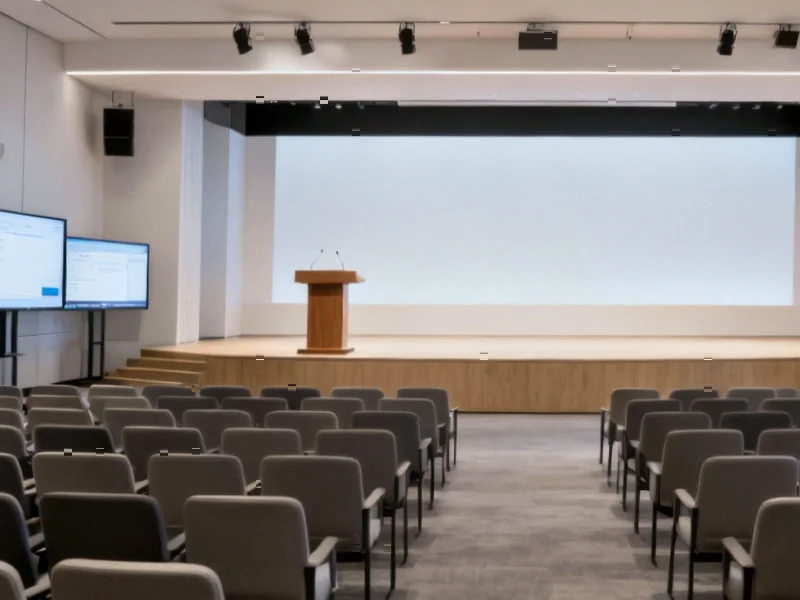According to Fast Company, Microsoft’s latest Work Trend Index reveals the “infinite workday” has become the norm for knowledge workers, with the pandemic-era “triple peak” work pattern persisting. After-hours activity is rising significantly, with meetings after 8 p.m. increasing 16% year over year and nearly one-third of active workers returning to their inboxes by 10 p.m. Weekend work has become routine, with about 20% of weekend workers checking email before noon on both Saturday and Sunday. During core work hours, employees face constant interruptions every two minutes on average, contributing to 48% of employees and 52% of leaders reporting work feels chaotic and fragmented. This data paints a troubling picture of modern work patterns that demand deeper analysis.
The Productivity Paradox of Constant Connectivity
What Microsoft’s data reveals is a fundamental productivity paradox: the very tools designed to make us more efficient are systematically destroying our ability to do meaningful work. The constant interruptions every two minutes create a cognitive environment where deep work becomes mathematically impossible. Research on context switching shows that even brief interruptions can require over 20 minutes to fully regain deep concentration. When you multiply this by hundreds of daily interruptions, the result isn’t just fragmented work—it’s fundamentally compromised output quality. The irony is stark: we’ve built digital workplaces that optimize for responsiveness at the exact cost of the thoughtful, creative work that actually drives business value.
This Isn’t a Personal Discipline Problem—It’s a Structural Failure
The framing of this as a “boundary-setting” issue dangerously misdiagnoses the problem. When organizational culture, performance metrics, and communication tools all reinforce constant availability, individual boundary-setting becomes career-limiting behavior. The 16% increase in after-8-p.m. meetings isn’t happening because employees lack discipline—it’s happening because companies have failed to establish clear operational guardrails. The real issue is that we’ve exported the cost of poor work design onto individual employees’ mental health and cognitive capacity. No amount of personal time management training can overcome systemic organizational pressures that reward constant availability and punish focused work.
Technological Determinism in the Digital Workplace
We’re witnessing technological determinism in action: the tools we’ve built are now dictating work behaviors regardless of human cognitive limitations. The always-on nature of collaboration platforms creates an expectation of instant response that fundamentally conflicts with how human attention and creativity function. The data showing half of meetings occurring during peak focus hours (9-11 a.m. and 1-3 p.m.) reveals how poorly we’re optimizing for actual productivity versus mere activity. This isn’t an accident—it’s the logical outcome of designing systems that prioritize visibility and coordination over individual cognitive performance. The tools are winning, and human effectiveness is losing.
The Leadership Complicity Problem
Perhaps the most damning insight from Microsoft’s data is that 52% of leaders also feel work is chaotic and fragmented. This indicates a profound failure of leadership to translate their own experience into meaningful organizational change. When leaders experience the same dysfunction but fail to implement structural solutions, it suggests either a lack of courage to challenge established norms or a fundamental misunderstanding of their role in shaping work culture. The fact that leadership perceptions align with employee experiences reveals this isn’t a problem that can be solved through individual coping strategies—it requires courageous organizational redesign that most companies seem unwilling to undertake.
Moving Beyond Individual Boundaries to Systemic Solutions
The solution to the infinite workday crisis won’t be found in better personal boundary-setting alone. We need fundamental redesign of work systems that includes protected focus time, meeting-free blocks, asynchronous communication norms, and explicit organizational policies about after-hours work. Companies that succeed in reversing these trends will be those that recognize this as a systemic design problem rather than an individual performance issue. The data clearly shows the current path is unsustainable—the question is whether organizations have the courage to implement the structural changes needed to protect both productivity and people.




